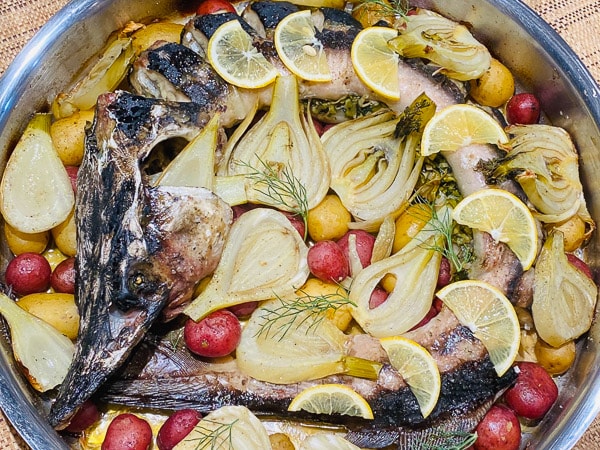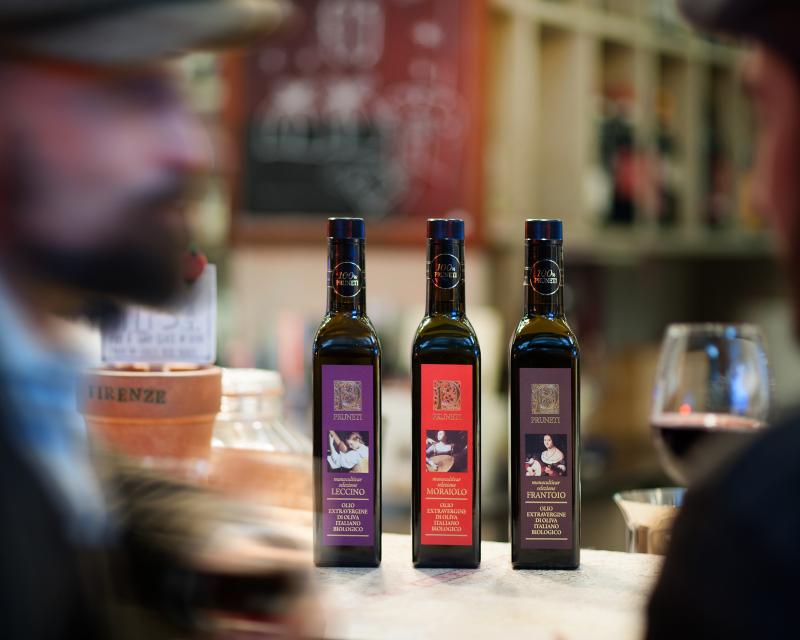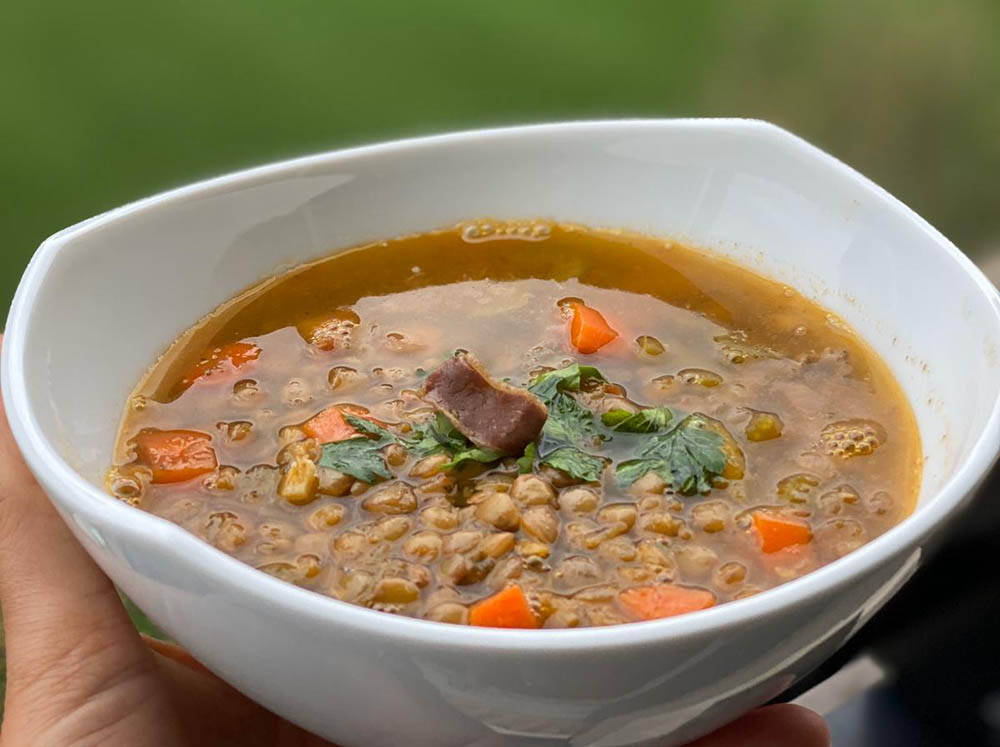The Science of Food Texture: Exploring Crispy, Creamy, and Chewy Elements
Welcome to Marky's Gourmet! If you are a gourmet food lover or an aspiring home chef, then understanding the science behind texture can open up vast possibilities for creating delicious flavors and delightful dishes. Texture is one of the most important elements that we consider when we eat, as it is often what initially catches our attention and sets the stage for how certain foods will taste before they even reach our tongues. But why do some foods feel crispy, creamy, or chewy? In this blog post, we'll dive into the science behind these three key food textures to explore how each can be used in different ways to elevate your culinary creations.
Introducing Marky's Gourmet and the Science of Food Texture

Welcome to the world of Marky's Gourmet, where we have dedicated years to mastering the science of food texture. We are passionate about creating culinary experiences that tantalize the senses and leave a lasting impression. Our team of experts intimately understands how texture plays a vital role in the enjoyment of food, whether it's the crunch of a perfectly seared steak or the silky smoothness of a rich chocolate mousse. Through meticulous experimentation and tireless research, we have developed a deep understanding of how different textures interact with each other to create a symphony of flavor and tactile sensation. Join us on this journey of discovery and taste the difference that truly exceptional texture can make.
Exploring the Different Types of Texture - Crispy, Creamy, and Chewy
Have you ever stopped to consider the impact that texture has on your culinary experience? Crunchy, velvety, sticky - these sensations can all make or break a dish. By exploring the different types of texture, we gain a deeper appreciation for the complexity and beauty of food. Take "crispy," for example. The satisfying snap of a potato chip or the crackle of roasted vegetables can add a delightful contrast to a meal, awakening the taste buds and keeping things interesting. On the other hand, "creamy" textures, like a luscious cheesecake or silky ricotta, can provide a smooth and comforting mouthfeel. And who can forget "chewy"? From classic gummy bears to the satisfying chew of a bagel, this texture is all about the lasting impact - a way to savor and extend the pleasure of eating. The world of texture is vast and exciting - let's dive in!
Applying the Science of Food Texture to Gourmet Dishes
When it comes to creating gourmet dishes, there's no denying that food texture plays a huge role in the overall dining experience. That's why it's important to apply the science of food texture to elevate your dishes to new heights. By understanding the different textures that ingredients can bring to a dish and how they interact with each other, you can create complex and unforgettable flavor experiences. From creamy sauces to crispy crusts, each texture adds a unique dimension to the dish. So whether you're a professional chef or a passionate home cook, embrace the science of food texture and take your gourmet creations to the next level.
Understanding the Different Ways to Achieve Varying Textures in Food
As food lovers, we all enjoy different textures in our meals. Whether it's the crispy crunch of a perfectly fried chicken or the smooth and creamy texture of a deliciously whipped cheesecake, achieving the desired texture is key to creating a satisfying dish. Fortunately, there are many different ways to achieve varying textures in food, each of which requires its own set of techniques and ingredients. From grilling to frying, baking to sauteing, every method yields different results. Some, like slow-cooking, require patience and time, while others, like using a food processor, require precision and planning. No matter the method, understanding the science behind varying textures will help elevate your dishes to new heights. So let's roll up our sleeves, grab our aprons and explore the world of textures in food!
Utilizing Texture to Enhance Flavor and Appeal in Dishes
Texture is an essential element in any dish. It not only provides an added dimension of complexity to the flavor, but it also adds appeal to the appearance of a plate. Utilizing texture in cooking can elevate a dish to new heights, offering a more satisfying experience for the palate. With the right combination of textures, a dish can go from ordinary to extraordinary. For instance, the crunch of a crouton or the crispiness of fried chicken skin can add a satisfying contrast to a creamy soup or sauce. Similarly, the juxtaposition of soft and hard textures in a salad can create a more dynamic and interesting eating experience. Overall, incorporating texture in cooking requires an understanding of the various techniques and ingredients that create it, but once mastered, texture can become a powerful tool in a cook's arsenal.
Recipes Featuring Crispy, Creamy, and Chewy Elements From Marky's Gourmet
If you're looking for recipes that are sure to delight your taste buds with crispy, creamy, and chewy elements, Marky's Gourmet has got you covered. At Marky's, we believe that cooking is an art, and that's why we only use the finest quality ingredients to create dishes that are as delicious as they are eye-catching. From crunchy, golden-brown crostini topped with creamy burrata and sweet-sour cherry tomatoes, to chewy macarons filled with velvety ganache, our recipes are sure to impress even the most discerning palate. So why settle for mediocre when you can elevate your meals with Marky's Gourmet?
Crispy Prosciutto Crostini with Creamy Burrata and Sweet-Sour Cherry Tomatoes
Ingredients:
- 8 slices of prosciutto
- 4 slices of baguette, toasted
- 2 tablespoons olive oil
- ½ cup cherry tomatoes, halved
- 1 teaspoon balsamic vinegar
- ½ cup burrata cheese
- Salt and pepper, to taste
Instructions:
- Preheat oven to 375°F. Place prosciutto slices in a single layer on a baking sheet lined with parchment paper. Bake for 10-12 minutes or until crisp.
- In a small bowl, combine cherry tomatoes, olive oil, balsamic vinegar, salt and pepper. Mix lightly to combine.
- Toast the baguette slices until golden brown and slightly crispy.
- Top each slice of bread with burrata cheese and tomato mixture, then top with a slice of crispy prosciutto.
- Serve and enjoy!
Chewy Macarons with Velvety Ganache Filling
Ingredients:
- 1 cup almond flour
- ½ cup icing sugar
- ½ teaspoon salt
- 2 egg whites, room temperature
- ⅓ cup granulated sugar
- ¼ cup semi-sweet chocolate chips
- 3 tablespoons heavy cream
Instructions:
- Preheat oven to 300°F. In a bowl, mix together almond flour, icing sugar and salt until well combined.
- In another bowl, beat egg whites on high speed using an electric mixer. Slowly add in the granulated sugar and continue beating until stiff peaks form.
- Gently fold the almond flour mixture into the egg whites until just combined. Do not overmix!
- Place spoonfuls of batter onto parchment paper-lined baking sheets. Bake for 18 minutes or until lightly golden brown and set aside to cool completely before filling with gan
By utilizing the science of food texture with Marky's Gourmet products, chefs can design menus to not only tantalize taste buds but also awaken other senses. Every dish has the potential to be elevated with textural elements that make it stand out from the rest. Texture plays an integral part in bringing flavor full circle, making dishes exceptionally appealing as well as delicious. From appetizers and entrees to desserts and cocktails, Marky's Gourmet offers a wide array of texture combinations to create unique culinary works of art. With just a Sprinkle of Science™ you can now say goodbye to boring meals, and hello to exciting new flavor profiles!






